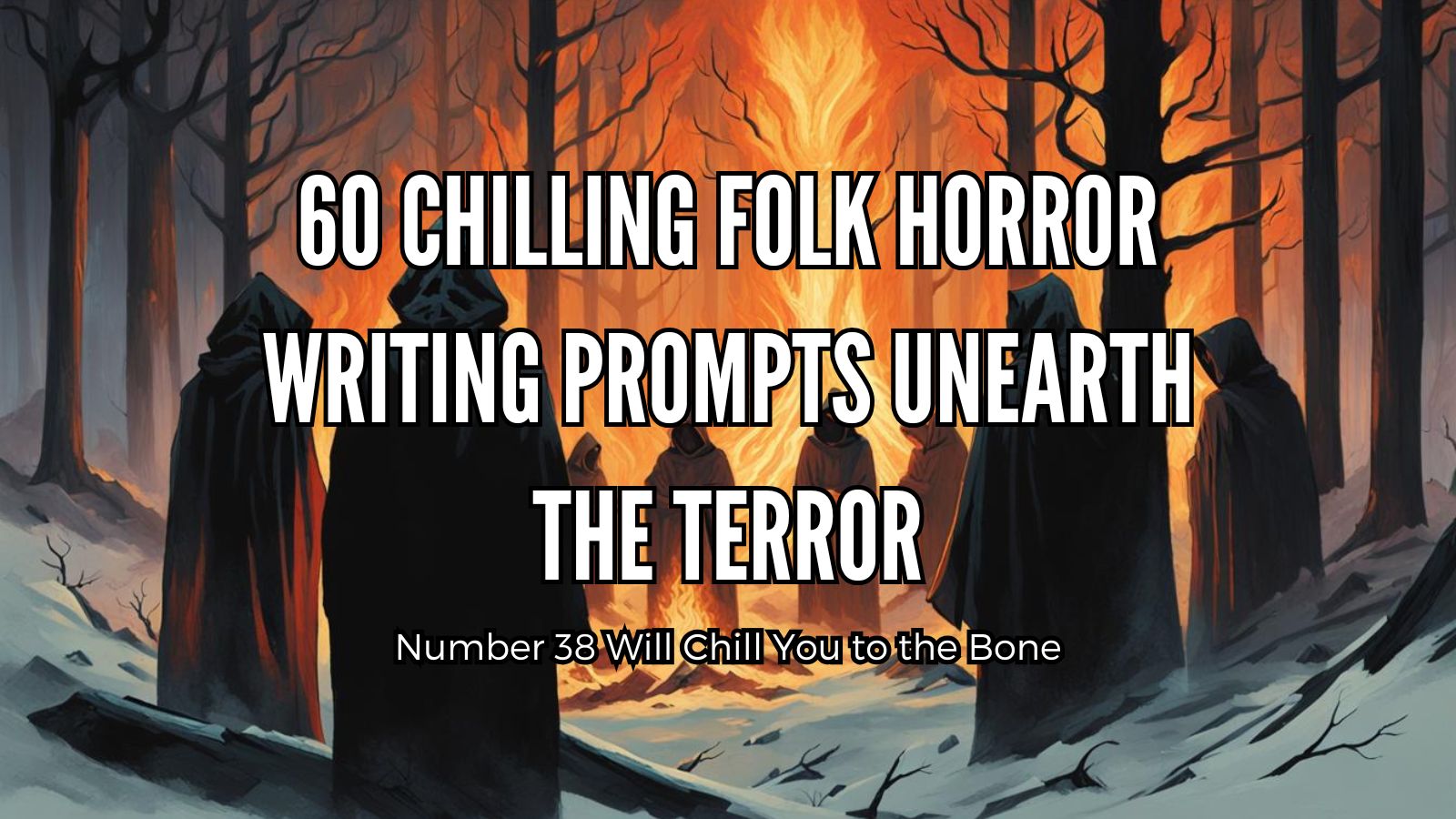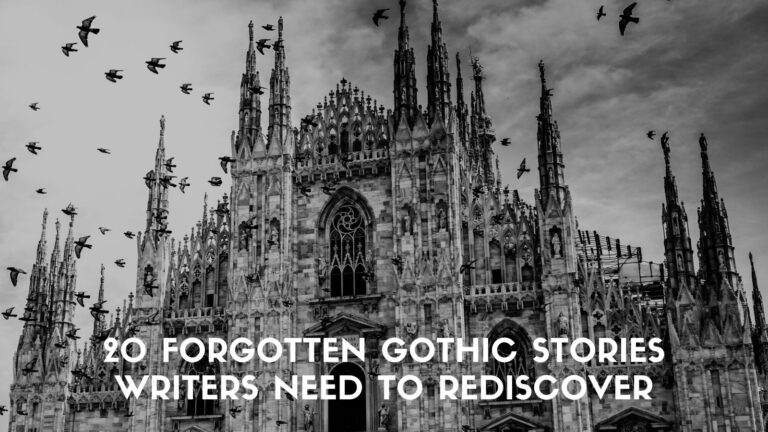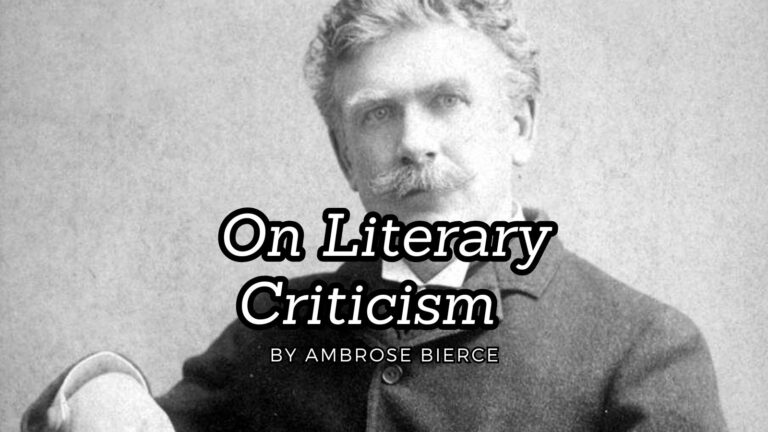60 Chilling Folk Horror Writing Prompts Unearth the Terror
Number 38 Will Chill You to the Bone
Folk horror, a subgenre that has been captivating audiences for decades, continues to grow in popularity among writers and readers alike. This unique blend of horror fiction intertwines rural settings, ancient traditions, and often isolationist communities with elements of the supernatural or occult. From classic works like “The Wicker Man” to modern masterpieces such as “Midsommar,” folk horror taps into our primal fears and fascination with the unknown lurking just beneath the surface of seemingly idyllic countryside life.
At its core, folk horror explores the tension between the old ways and modern society, often set against a backdrop of unspoiled nature that holds secrets darker than city dwellers could imagine. It draws on folklore, paganism, and superstition to create narratives where the land itself seems alive and malevolent, or where ancient rituals hold terrifying power. The genre frequently features outsiders stumbling into tight-knit communities with sinister undercurrents, blurring the line between human evil and supernatural forces.
For writers looking to delve into this atmospheric and unsettling genre, we’ve compiled a list of 60 folk horror writing prompts. These seeds of terror are designed to inspire your next short story, novel, or screenplay, each one a portal to a world where the past refuses to stay buried and nature itself may be your greatest foe. From cursed artifacts and eerie traditions to landscapes that hunger and communities harboring cosmic horrors, these prompts span the breadth of folk horror’s potential.
Whether you’re a seasoned horror author or a newcomer to the genre, these prompts offer a wealth of starting points for your folk horror tales. They touch on common themes within the genre: isolation, the power of belief, the dark side of tradition, and the often blurry line between the natural and supernatural. Each prompt is a seed that can grow into a fully-fledged story, rich with atmosphere and dripping with dread.
As you explore these prompts, remember that the best folk horror often leaves readers questioning the boundary between reality and nightmare. It’s a genre that thrives on ambiguity, where the true horror might lie not in the supernatural elements, but in the actions of human beings driven by fear, isolation, or fervent belief. So sharpen your quills (or boot up your word processors), and prepare to journey into the heart of folk horror with these 60 chilling writing prompts.
- A village’s annual harvest festival takes a dark turn when the ceremonial effigy comes to life.
- An urban explorer discovers an abandoned town where the residents still live their daily routines as ghosts.
- A family inherits an old mill, only to find it’s powered by supernatural means.
- Local children start disappearing after a traveling puppet show visits a small town.
- A remote island community’s fertility rituals involve sacrificing outsiders to an ancient sea deity.
- An isolated mountain community is revealed to be a refuge for mythical creatures hiding from the modern world.
- A folklorist studying regional tales becomes entangled in the very legend they’re researching.
- The last speaker of a dying language unknowingly keeps an ancient evil at bay through daily recitations.
- A drought-stricken farming community turns to old pagan rituals to bring rain, with horrifying consequences.
- Hikers stumble upon a hidden valley where time moves differently, and the inhabitants practice archaic customs.
- A small town’s traditional wicker man burning ceremony accidentally summons an ancient fire spirit.
- An old gravestones restorer discovers that each cleaned tombstone awakens its occupant.
- A group of friends recreating an old folk song unknowingly open a portal to a nightmarish realm.
- A remote village’s inhabitants are slowly being replaced by their own reflections from a cursed lake.
- An anthropologist studying isolated tribes discovers a community that has evolved beyond humans.
- A forgotten Appalachian hollow is home to the last practitioners of a powerful form of folk magic.
- The new owner of an old apple orchard learns the trees require a gruesome form of fertilizer to bear fruit.
- A folklorist collecting regional ghost stories realizes they’re unknowingly creating a powerful tulpa.
- An old-growth forest is revealed to be a single, sentient organism that has been influencing the nearby town for centuries.
- The discovery of ancient cave paintings unleashes a prehistoric evil that had been trapped within the artwork.
- “The Whispering Wheat” In a small farming community, the wheat fields begin to whisper at night. Locals who listen too closely find themselves compelled to walk into the fields, never to return. As harvest time approaches, the remaining villagers must decide whether to risk reaping the crop or face starvation.
- “The Binding Quilt” An elderly quilter in a remote mountain town creates intricate quilts that seem to move when no one’s looking. It’s discovered that each quilt contains the soul of a deceased villager, supposedly protecting the town. But when an outsider buys one, the town’s dark secrets begin to unravel.
- “The Fiddler’s Folly” A centuries-old fiddle is unearthed during a construction project. When played, it produces hauntingly beautiful music that drives listeners to dance uncontrollably. As more people fall under its spell, the town slowly dances itself to exhaustion and madness.
- “The Cow’s Skull Choir” In a drought-stricken prairie town, residents begin hanging cow skulls on their porches to ward off evil. The skulls start to sing eerie melodies at night, promising rain in exchange for sacrifices. The town must decide how far they’ll go to end the drought.
- “The Solstice Swap” During the summer solstice, a village practices an ancient custom where adults and children switch roles for 24 hours. This year, as the sun fails to set, the swap becomes permanent, with horrifying consequences as children take control.
- “The Beekeeper’s Burden” A newcomer to a small town takes up beekeeping, only to discover their hives are home to tiny, malevolent fairies rather than bees. The fairies offer prosperity to the town in exchange for increasingly disturbing demands.
- “The Scarecrow’s Seeds” A farmer creates a scarecrow using an old family recipe, incorporating bones and hair. The scarecrow not only protects the crops but begins to plant its own seeds, growing grotesque human-plant hybrids that slowly replace the townspeople.
- “The Mist Weavers” In a coastal village perpetually shrouded in mist, the local women weave intricate patterns said to control the weather. When a young girl creates a new pattern, she unknowingly invites cosmic horrors into our dimension.
- “The Candle Maker’s Sight” A blind candle maker creates scented candles that, when burned, allow people to see ghosts. As demand for the candles grows, the town becomes overrun with spirits, and the boundary between the living and dead blurs dangerously.
- “The Bottomless Barrel” During a famine, a village discovers an old barrel that never runs out of food. However, each person who eats from it disappears, only to be seen inside the barrel by the next person who looks in. The villagers must choose between starvation or feeding on each other.
- “The Threshing Stone” An ancient stone used for threshing grain is unearthed in a field. When used, it separates more than just grain from chaff – it begins to separate souls from bodies, creating a workforce of empty husks controlled by disembodied spirits.
- “The Wishing Well’s Toll” A village’s wishing well actually grants desires, but for each wish granted, someone in the village falls mysteriously ill. As wishes become more extravagant, the illnesses become more severe, leading to a cycle of wishing for cures.
- “The Chalk Man’s Children” A traveling artist draws remarkably lifelike chalk figures of children on walls and sidewalks. These drawings come to life at night, replacing real children in their beds. Parents wake to find their children transformed into living chalk.
- “The Loom of Fate” In a village known for its textiles, an old loom is discovered that weaves the fate of the town into its fabric. Cutting or altering the fabric changes reality, but each change comes with unforeseen and often horrific consequences.
- “The Mushroom Circle” A fairy ring of mushrooms in the local woods grows larger each year. Those who step inside experience their greatest desires, but emerge changed. The town slowly empties as more people choose to stay within the ring permanently.
- “The Bell Tower’s Toll” An old church bell, when rung, allows the ringer to trade places with someone who has died. The village priest uses this to bring back deceased loved ones, but soon the dead outnumber the living, and they have no intention of returning.
- “The Harvest Doll” Each year, a corn dolly is made from the last sheaf of the harvest. This year, the doll begins to grow, becoming more lifelike and demanding sacrifices to ensure future harvests. The larger it grows, the more it needs to consume.
- “The Binding Stones” Ancient standing stones on the outskirts of town are discovered to be a prison for primordial entities. As modern life erodes the old ways, the bindings weaken, and the entities begin to influence the dreams and actions of the townsfolk.
- “The Wicker Watchers” A town creates wicker effigies as part of an old tradition to watch over crops. The effigies begin to move on their own, enforcing harsh punishments for any perceived transgression against nature, no matter how small.
- “The Siren’s Cave” A coastal cave known for its acoustic properties becomes home to a siren-like entity. Its song compels listeners to carve symbols into their skin, slowly transforming the townsfolk into an amphibious cult.
- “The Endless Rope” A village craftsman creates a rope that never ends, allowing the town to easily draw water from deep wells. However, something begins to climb up from the depths, and cutting the rope only causes it to grow faster towards the surface.
- “The Gossamer Veil” During an annual festival, young women wear veils woven from spider silk. This year, the veils begin to merge with their wearers’ skin, slowly transforming them into arachnid-human hybrids with a hive mind.
- “The Fallow Field” A farmer discovers that leaving a field fallow for a season causes it to produce bountiful crops the next year. He experiments with leaving it fallow for longer, only to find that the land begins to hunger for more than just rest.
- “The Witch Bottle” An old witch bottle is unearthed during home renovations. Breaking it releases centuries of trapped curses and malevolent spirits into the town, each seeking revenge on the descendants of those who imprisoned them.
- “The Bonfire’s Bargain” During a traditional bonfire celebration, townspeople write wishes on paper and burn them. This year, the wishes start coming true, but each fulfilled desire costs the life of another villager.
- “The Patchwork Preacher” A new preacher arrives in town, his skin a patchwork of different tones. Each sermon he gives causes a piece of him to fall off, revealing cosmic horrors underneath. The congregation finds themselves unable to stop attending.
- “The Fog Herder” An old shepherd claims to herd fog instead of sheep. When the town mocks him, he unleashes his ‘flock’, each cloud containing the tortured souls of those who wronged him in the past.
- “The Root Cellar” A family’s root cellar is discovered to extend far deeper than possible, containing twisted versions of local plants. Those who eat from these stores begin to change, craving soil and sunlight.
- “The Corn Widow” After losing her husband, a farmer’s wife creates a scarecrow in his image. The effigy comes to life, but its love turns possessive, seeing the entire town as rivals for her affection.
- “The Midsummer Masquerade” During a solstice celebration, villagers wear masks representing local animals. As the night progresses, they find themselves unable to remove the masks and slowly taking on the characteristics of the animals they represent.
- “The Hungry Hills” The rolling hills surrounding a valley town are revealed to be sleeping giants. As modern life encroaches, they begin to stir, demanding sacrifices to return to their slumber.
- “The Widow’s Lace” A grieving widow creates intricate lace patterns that, when worn, allow communication with the dead. The demand for her lace grows, but each connection weakens the barrier between worlds.
- “The Thatcher’s Curse” A thatcher uses hair from the recently deceased in his work, believing it strengthens the roof. The buildings he works on become animate, developing appetites that can only be sated with human flesh.
- “The Endless Wake” A prominent town elder dies, but their body doesn’t decompose. The wake continues for weeks as more townspeople attend, only to find themselves unable to leave, slowly starving as they pay their respects.
- “The Butter Churn Bargain” An old butter churn is said to produce the most delicious butter if used at midnight. Those who churn find their deepest desires fulfilled, but lose a part of their soul with each turn of the paddle.
- “The Orchard’s Offspring” An apple orchard tended by the same family for generations begins to produce fruit in the shape of human faces. Each apple, when eaten, imparts memories of a deceased villager, slowly replacing the eater’s own identity.
- “The Feather Collector” A traveling peddler trades beautiful feathers for small favors. Those who wear the feathers find themselves slowly transforming into birds, compelled to join the peddler’s ever-growing flock.
- “The Hearth Mother” The ashes from the town’s oldest fireplace are used to bless newborns. The ritual ties the children’s lives to the hearth, which begins to demand fuel beyond mere wood to keep burning.
- “The Moonlight Market” Once a month, under the full moon, a night market appears in the town square. The wares are miraculous, but each purchase costs a memory. Regular patrons slowly lose their identities, becoming part of the market itself.
- “The Whittler’s Woodland” A reclusive whittler creates lifelike wooden animals. As deforestation threatens the local woods, his creations come to life, replacing the forest’s dwindling population with much more aggressive wooden versions.
Crafting Folk Horror: A Guide to Unearthing Ancient Terrors
When approaching folk horror, writers must strike a delicate balance between the familiar and the uncanny. This subgenre thrives on the tension between our modern world and the echoes of a darker, more superstitious past. Here’s how you can effectively craft your folk horror tale:
- Research and Respect Folklore: While folk horror often involves fictional or reimagined traditions, grounding your work in real folklore adds authenticity. Research local legends, forgotten customs, and obscure myths. However, approach this with respect, especially when dealing with living cultures or sensitive topics.
- Build a Convincing Setting: The setting in folk horror is crucial. Whether it’s a remote village, an ancient forest, or a crumbling manor, make it vivid and believable. Use sensory details to bring the location to life, and let the history of the place seep through in every description.
- Develop Complex Characters: Your characters, whether locals or outsiders, should be multidimensional. Explore their motivations, fears, and the ways their beliefs shape their actions. The conflict between modernity and tradition can be reflected in your characters’ internal struggles.
- Gradual Revelation: Folk horror often works best with a slow burn. Start with subtle hints of something amiss, gradually building tension as the true nature of the horror is revealed. This approach mirrors the protagonist’s journey from skepticism to terrifying realization.
- Blend the Natural and Supernatural: In folk horror, the line between the explainable and the supernatural is often blurred. Is the horror rooted in ancient magic, or in the depths of human nature? This ambiguity can heighten the sense of unease.
- Incorporate Ritual and Tradition: Rituals, whether ancient or invented, play a significant role in folk horror. Detail these practices, exploring their origins and the power they hold over the community. The horror often stems from the lengths people will go to uphold tradition.
- Explore Isolation: Physical or psychological isolation is a common theme. Use this to heighten tension and limit your characters’ options for escape or outside help.
- Employ Symbolic and Thematic Depth: Folk horror lends itself well to deeper themes. Explore concepts like the price of progress, the power of belief, the danger of mob mentality, or humanity’s relationship with nature.
- Create Atmospheric Prose: Your writing style should contribute to the atmosphere. Use lyrical descriptions, rhythmic sentences, or stark prose – whatever best conveys the creeping dread central to folk horror.
- Subvert Expectations: While drawing on folk horror traditions, don’t be afraid to subvert them. A unique twist on familiar tropes can make your story stand out and resonate with readers.
Remember, the most effective folk horror lingers in the mind long after the story ends. It should leave readers questioning the world around them, perhaps seeing their own traditions and landscapes in a new, unsettling light. As you write, aim not just to frighten, but to unsettle at a deeper, more primal level.
Embracing the Shadows: Crafting Your Folk Horror Tale
As you’ve journeyed through these 60 folk horror writing prompts, you’ve peered into the shadowy corners of rural life, ancient traditions, and the terrifying unknown. Each prompt offers a unique gateway into the realm of folk horror, inviting you to explore the delicate balance between the natural and supernatural, the past and present, the familiar and the utterly alien. Remember, the most effective folk horror doesn’t just shock – it unsettles, it lingers, it makes the reader question the very ground beneath their feet.
When crafting your folk horror tale, pay close attention to atmosphere. The setting in folk horror is more than just a backdrop; it’s often a character in its own right. Let the landscape breathe, let it whisper its secrets. Whether it’s a fog-shrouded moor, a claustrophobic forest, or a seemingly idyllic village, make the environment palpable. Use all the senses to immerse your reader in a world where the ordinary can swiftly become extraordinary – and terrifying.
Don’t shy away from the human element in your stories. While supernatural forces often play a role in folk horror, some of the most chilling moments come from the actions of people. Explore the depths of human nature – our capacity for belief, for sacrifice, for cruelty in the name of tradition. Let your characters grapple with moral ambiguity, with the weight of ancient customs, with the terror of being an outsider in a close-knit community that may harbor dark secrets.
As you develop your folk horror narrative, consider the power of the unseen and the unsaid. Folk horror thrives on suggestion, on the terror of the unknown. Sometimes, what you don’t show can be more frightening than what you do. Let your readers’ imaginations run wild in the spaces between the words. Build tension through subtle details, unexplained phenomena, and the gradual realization that something is very, very wrong beneath the surface of normalcy.
Finally, as you bring your folk horror story to life, remember that the genre is as much about atmosphere and theme as it is about specific plot points. These prompts are starting points, seeds from which your unique vision can grow. Feel free to combine elements from different prompts, to twist and shape them to fit your narrative. The world of folk horror is vast and varied – from cosmic horror in rural settings to the terror of ancient pagan rituals in the modern world. Wherever your writing takes you, stay true to the spirit of folk horror: the dread that comes from realizing that the old ways are not dead, that the past is not past, and that sometimes, the real monsters are the ones we create ourselves.
- 20 Forgotten Gothic Stories Writers Need to Rediscover - April 18, 2025
- The Writer’s Roadmap: Embracing Outlining (Free Worksheet Included!) - April 15, 2025
- A Complete Guide to the Hero’s Journey in Storytelling (Free Worksheet) - April 10, 2025






